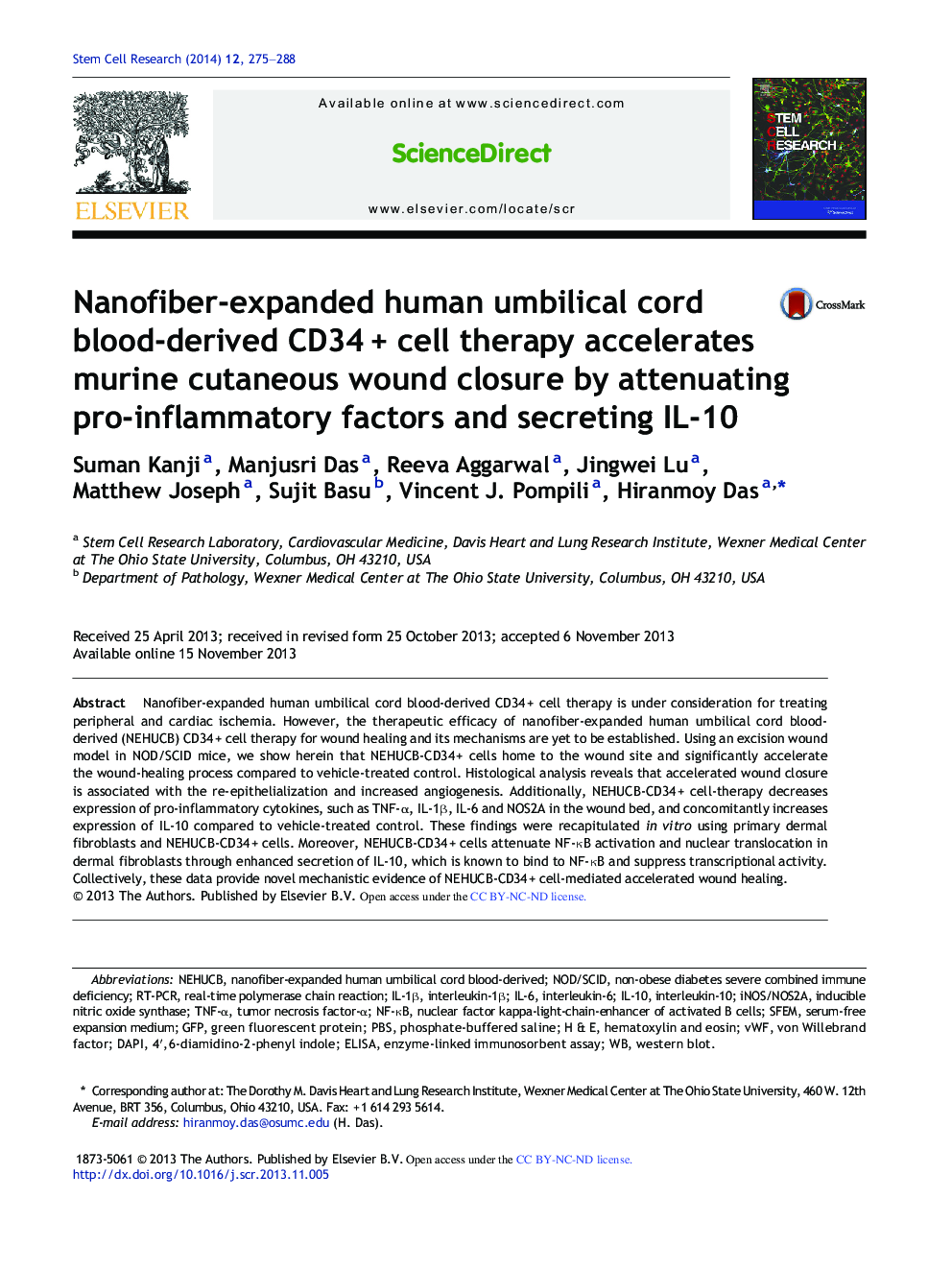| Article ID | Journal | Published Year | Pages | File Type |
|---|---|---|---|---|
| 2094594 | Stem Cell Research | 2014 | 14 Pages |
•NEHUCB-CD34 + cells accelerate cutaneous wound healing.•NEHUCB-CD34 + cells reduce pro-inflammatory gene expression.•NEHUCB-CD34 + cells reduce activation and nuclear translocation of NF-κB.•NEHUCB-CD34 + cells secrete the anti-inflammatory molecule IL-10.•IL-10 limits NF-κB activation.
Nanofiber-expanded human umbilical cord blood-derived CD34 + cell therapy is under consideration for treating peripheral and cardiac ischemia. However, the therapeutic efficacy of nanofiber-expanded human umbilical cord blood-derived (NEHUCB) CD34 + cell therapy for wound healing and its mechanisms are yet to be established. Using an excision wound model in NOD/SCID mice, we show herein that NEHUCB-CD34 + cells home to the wound site and significantly accelerate the wound-healing process compared to vehicle-treated control. Histological analysis reveals that accelerated wound closure is associated with the re-epithelialization and increased angiogenesis. Additionally, NEHUCB-CD34 + cell-therapy decreases expression of pro-inflammatory cytokines, such as TNF-α, IL-1β, IL-6 and NOS2A in the wound bed, and concomitantly increases expression of IL-10 compared to vehicle-treated control. These findings were recapitulated in vitro using primary dermal fibroblasts and NEHUCB-CD34 + cells. Moreover, NEHUCB-CD34 + cells attenuate NF-κB activation and nuclear translocation in dermal fibroblasts through enhanced secretion of IL-10, which is known to bind to NF-κB and suppress transcriptional activity. Collectively, these data provide novel mechanistic evidence of NEHUCB-CD34 + cell-mediated accelerated wound healing.
